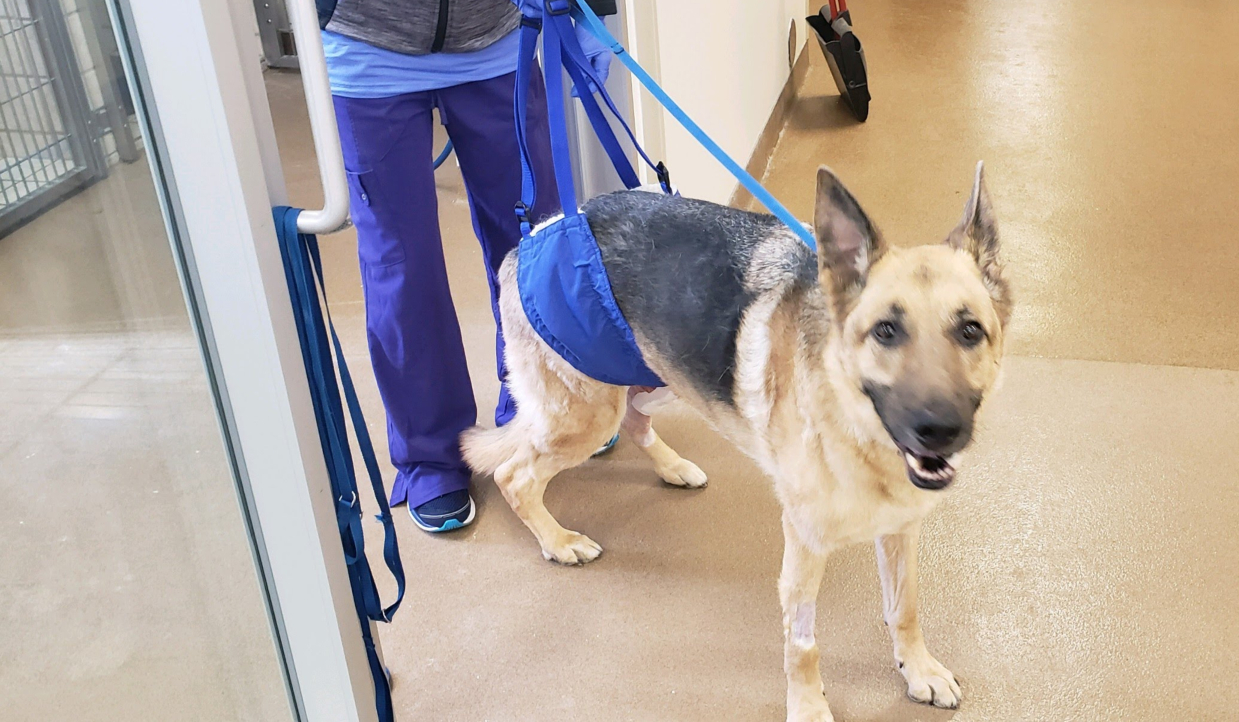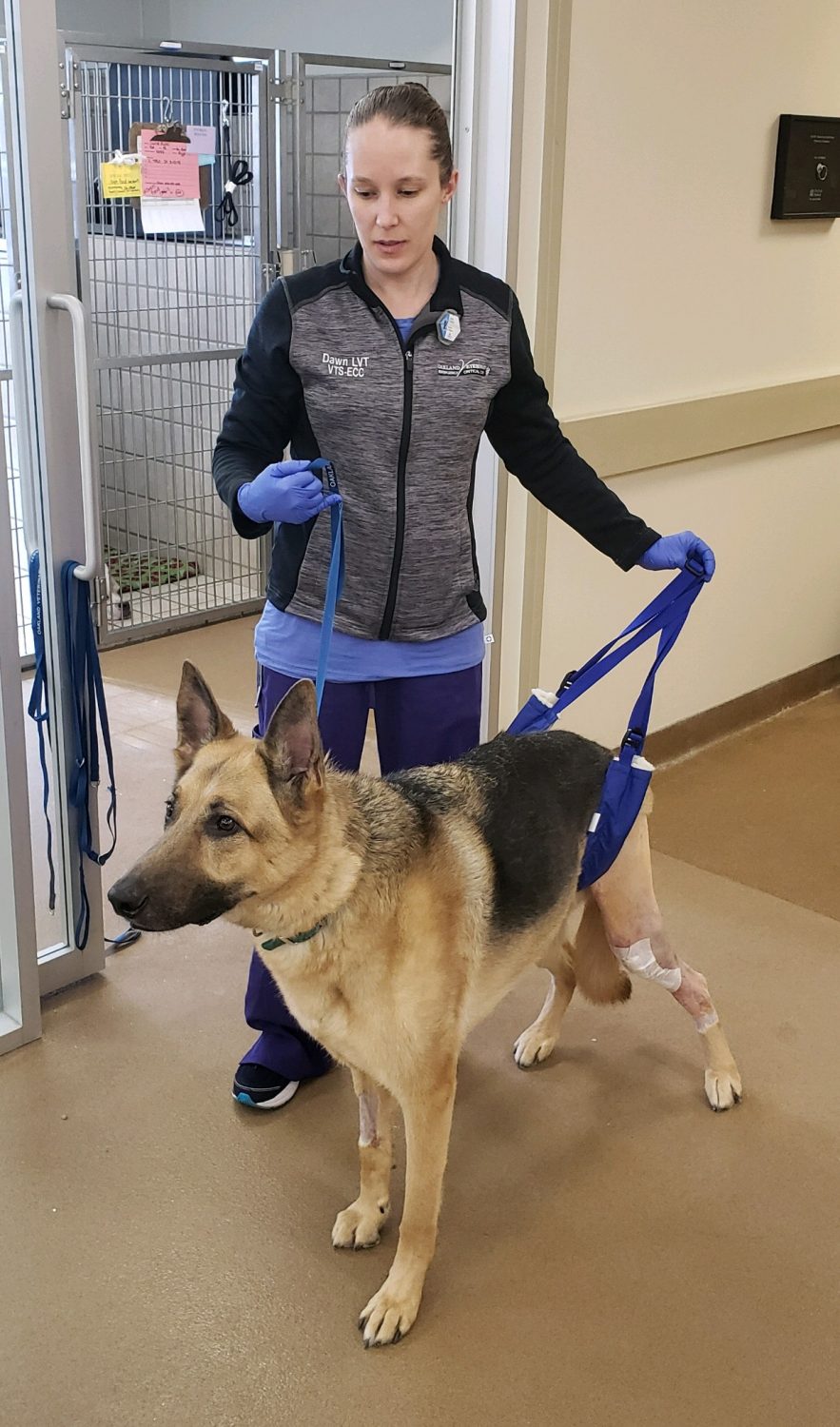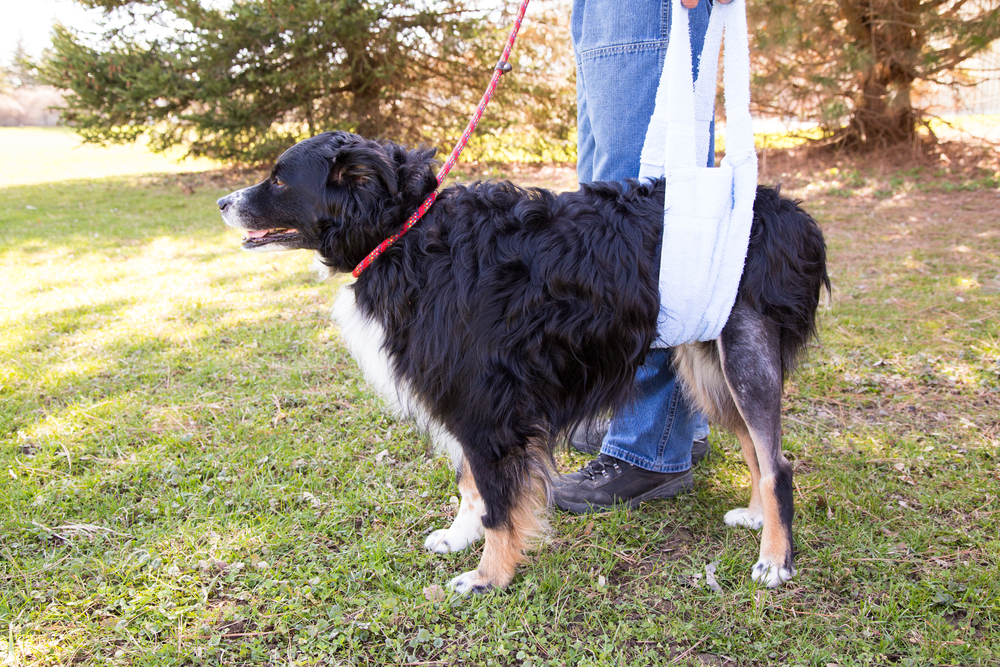The Dog Owner’s Guide to TPLO Surgery

Has your Veterinarian recommended Tibial Plateau Leveling Osteotomy (TPLO) surgery for your dog? TPLO is one of the most widely used procedures in repairing cranial cruciate ligament (CCL) tears in dogs (and sometimes in cats). In most cases, TPLO surgery is superior to that of other orthopedic surgeries. It is particularly successful in large breeds and those with advanced joint degeneration and CCL ruptures.
Many dogs suffer injuries related to CCL tears, fractures, and other orthopedic occurrences. These injuries require a highly skilled team of veterinary surgeons. This guide explains what TPLO is, in what cases it is needed, and why it’s effective. We also provide tips to maintain your dog’s orthopedic health post-surgery.
An Overview of CCL Ruptures in Dogs and Cats
You may be familiar with an ACL tear in humans. A torn anterior cruciate ligament is quite common among athletes. Similarly, the cranial cruciate ligament (CCL) in pets can tear after extensive impact on the ligament or during a sudden injury.
There are two ligaments in a pet’s knee joint–the cranial cruciate ligament and the caudal cruciate ligament. These ligaments are responsible for helping the knee function as a hinge joint, and help to prevent rotation between the femur (upper bone) and tibia (lower bone, AKA shin bone). The meniscus helps to act as a cushion between the tibia and femur.
A torn CCL causes pain and immobility. The level of immobility depends on the severity of the rupture. The diagnosis relies on an examination, X-rays, and manipulating the joint (called the cranial drawer test). This test measures the level of instability present in the joint. Over time, the joint will continue to degenerate, resulting in pain, chronic arthritis and lameness.
To treat a CCL rupture, veterinarians recommend the Tibial Plateau Leveling Osteotomy (TPLO), Tibial Tuberosity Advancement (TTA), or Lateral Fabellotibial Suture (LFS) surgery. Because of the success rate of the TPLO procedure, it is the most popular type of repair. Your dog will have better mobility and reduced osteoarthritis after surgery.
Overview of the TPLO Surgery
The TPLO procedure is a method to repair a cruciate ligament rupture. TPLO surgery helps to stabilize the stifle and reduce the likelihood of further osteoarthritis progression. The TPLO is the most common procedure for dogs with a cruciate tear. It requires a specialty surgeon to perform this procedure.
Prior to the TPLO Surgery
Prior to the TPLO procedure, the surgical team uses carefully positioned digital x-rays to help plan the procedure. The surgeon will inspect the knee structures and remove remnants of the damaged ligament(s). They do this by either opening the joint to look inside, or by making a small incision to take a closer look arthroscopically, using a miniature camera.
During the TPLO Surgery
During the surgery, the surgeon cuts the tibial plateau (the load bearing area of the knee) and repositions it in a 5 degree angle. The stifle (knee joint) will then be stable for the animal when bearing weight.
The surgeon performs the TPLO by cutting, rotating (to reduce excessive slope), and then repositioning the tibia. The bone graft is secured into place using a specially designed bone plate and screws.
The surgeon will also evaluate the meniscus. A torn meniscus can act as a source of constant irritation to the joint. The surgeon will remove any damaged parts of the meniscus. If the meniscus is not damaged, the surgeon performs a “meniscal release”. This helps prevent it from being damaged in the future.
After the TPLO Surgery
After the procedure, X-rays will once again be ordered to determine the new angle of the shin and how the position of the screws/plates are functioning. A bandage is applied over the incision site for protection.
For most dogs, this surgery requires an overnight stay in the hospital. During the procedure, your pet will be under a general anesthesia. The hospital will also administer painkillers and antibiotics.
Why Is a TPLO Necessary?
Because the TPLO procedure is a major orthopedic surgery, surgeons recommend it for dogs where not having the surgery will be worse for the pet’s health than having the surgery. In general, the TPLO has an excellent success rate. Deterioration of the ligaments and joints over time can be greater than the small risk associated with surgery. Your surgeon will discuss the best cruciate ligament surgery options for your dog on an individual basis.
The TPLO is more often suggested in injuries affecting large and giant dog breeds. But dogs of all breeds and ages may benefit from this procedure. Dogs that are good candidates for the surgery have experienced a rupture of the CCL and have joint instability with mild to severe lameness.
Post-Operative Recovery
The recovery period following an extensive orthopedic surgery will require rehabilitation for the best outcome. You can anticipate that your dog will need rest and exercise restrictions for 8-12 weeks. This allows the incision and bone to heal and the knee function to return. Most dogs recover in about 8 weeks. This can vary from patient to patient, based on factors such as age and overall body fitness level.
At-home Recovery
When you return home with your dog, follow these instructions for a successful recovery:
- Until the bone is completely healed, leash walk your dog to help prevent falls that could damage the bone plate. You will need to help them go outside for potty breaks and any sort of movement must be supervised. Slings or harnesses are available to help bigger dogs get up and walk, if necessary.

- Keep the incision site clean and dry at all times once your veterinarian removes the bandage or wound dressing. Monitor the area daily and please call your veterinarian if you notice any excessive swelling, bleeding or drainage.
- Use an Elizabethan collar for the first 2 weeks after surgery to prevent your dog from licking or chewing at the incision site.
- Apply towel-wrapped ice packs to the area (not directly on the skin). Do this 2-3 times per day for up to twenty minutes during the first 48-72 hours following surgery. If you don’t have an ice pack, a bag of frozen vegetables works well.
- Restrict your dog’s activity by using a small area in the home where they can stay and rest, such as a crate or an indoor circular fence.
- Keep your pet as comfortable as possible and use all medications as prescribed. If you think your pet is in pain, please phone your veterinarian–pain management is vital to recovery and overall wellbeing.
Take it Easy
It is also important to provide a calm environment at home. Limit disruptions and noise as much as possible, as increased levels of stress can impact your dog’s ability to heal.
Avoid:
- Roughhousing (with people or other pets in the home)
- Climbing steps
- Jumping
- Running

2-10 Weeks Post Operative Recovery
At 2 weeks post operatively, you can gradually increase the length of your dog’s leash walks. By the 8th week, your dog should be able to take two 20-minute walks each day and perform basic daily living activities.
At 8-10 weeks post operatively, your surgeon will do recheck x-rays to assess bone healing. Your dog will be able to gradually resume normal activities. We recommend a rehabilitation program to optimize your dog’s recovery. The rehabilitation facility should have experience in postoperative recovery from orthopedic injuries such as the TPLO. Some dogs also experience good results through laser therapy and acupuncture treatments.
Taking Care of Your Dog’s Orthopedic Health
You can also take part in your dog’s recovery and ongoing health by following certain lifestyle changes for your furry friend. These include:
- Keeping your dog at a healthy weight
- Supervising your dog to help minimize accidents and injuries
- Exercising your dog every day through walks and other age appropriate activities
- Following up on all postoperative care recommendations and yearly examinations
- Asking your veterinarian about supplements and medications that may aid in reducing inflammation and pain and supporting mobility
- Encouraging low impact forms of exercise, such as walking and swimming
Pain-free mobility and a great quality of life are what we all want for our four-legged friends. The TPLO surgery may be the treatment that best allows this to be possible. Oakland Veterinary Referral Services routinely performs the TPLO, and many other advanced surgical procedures. We are happy to answer all of your questions regarding cruciate surgery. Please phone us for more information.


